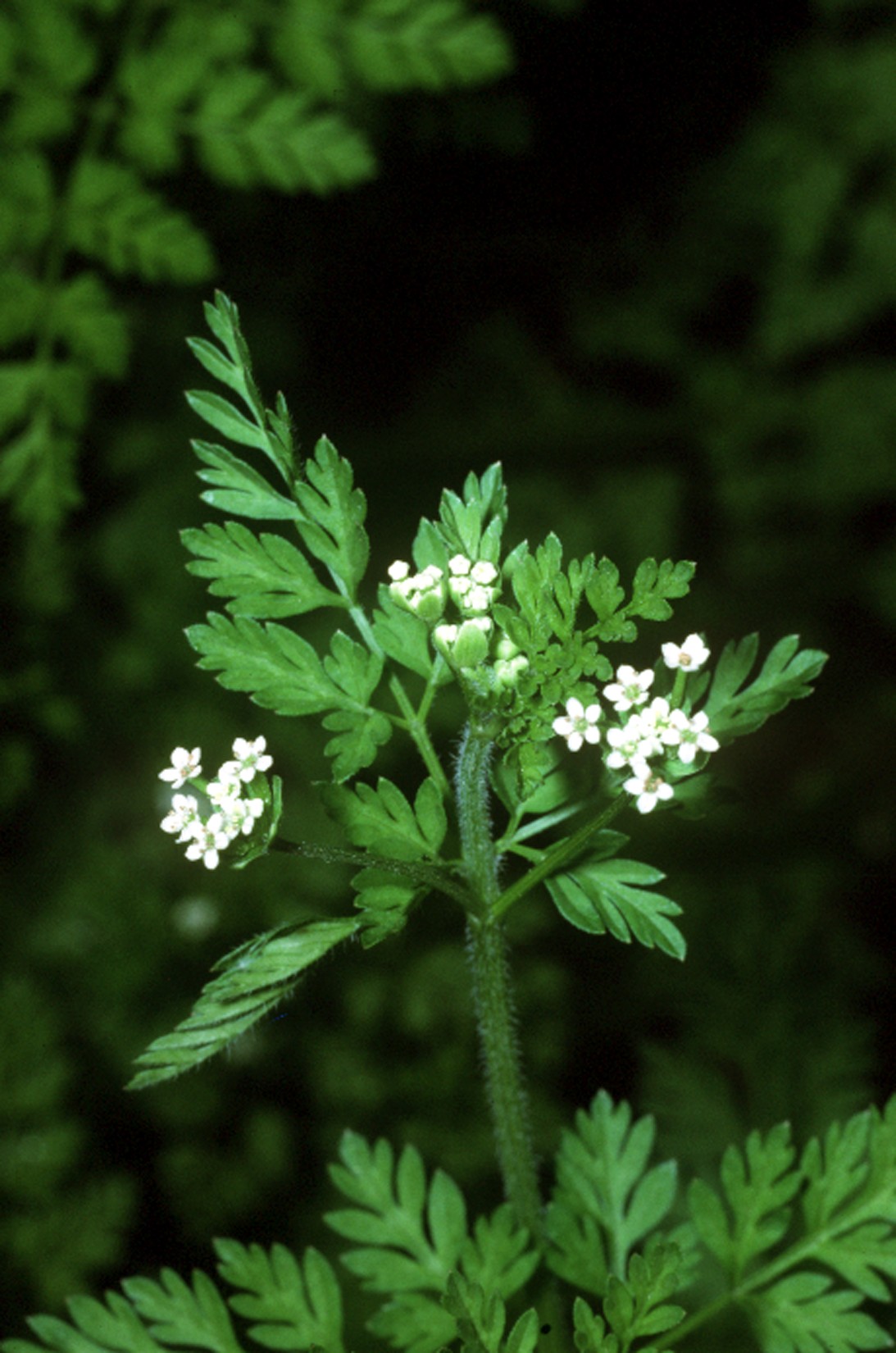Chervil (Anthriscus cerefolium), also known as French Parsley, is a French culinary herb that looks a lot like parsley and tastes like it with a hint of anise flavor. It is one of the fines herbes (a mixture of tarragon, chervil, parsley and chives) used in so many French dishes. Used in combination with tarragon, peppercorns and shallots, it gives béarnaise sauce its distinctive flavor. By itself, it is used in soups and omelets. Remember to always add chervil at the end of the cooking time since its delicate flavor is destroyed when cooked for too long.
Chervil is a related to carrots and native to the eastern Mediterranean. It was spread throughout Europe by the Romans who ate both the foliage and the taproot. It has also been used medicinally. The taproots were boiled and eaten in the belief that they would prevent the plague. Both the foliage and the root were eaten to treat hiccups. Washing the face with an infusion of chervil was thought to prevent wrinkles but there is no scientific basis for this belief.
Chervil is an annual plant that reaches a height of 12 to 24 inches. Like parsley and cilantro (the seed is coriander), it is a cool season plant growing best in the spring and fall when temperatures are cooler. In the heat of summer, it bolts (goes to seed). Or you can allow it to bolt, collect the seeds and do another sowing in the fall for a second crop.
If you want to grow chervil from seed, always use fresh seed. Older seed has poor germination rates. For best results, direct sow the seed in your garden two weeks before your last frost. Chervil has a long tap root and doesn’t like to be transplanted. Gently press the seeds into the soil but don’t cover them. They need light to germinate. You can expect germination in 7 to 14 days. When your seedlings are 2 inches tall, thin them to 12 inches apart.
Sow some seeds every few weeks to prolong your harvest. In the summer, sow them in a spot with a little shade to extend its growing season. If you have no shade, plant the seeds near tall plants that will provide a little shade. In the fall, you can plant them in full sun. Be sure to keep both the seeds and the resulting plants moist.
Your plants will be ready to harvest in 6 to 8 weeks. Continuous harvesting of the leaves will help prevent bolting but eventually the heat of summer or a hard frost in the late fall will end the plants’ life.
Chervil, like cilantro, loses its flavor when dried, so freezing is your best option for long term storage.


3 Comments on “Chervil”
Pingback: Wednesday Fun Fact - Chervil - Advice From The Herb Lady
My son is allergic to Parsley so can I substitute Chervil or just avoid this too?
Unfortunately chervil is related to parsley so your son may also be allergic to chervil. My advice would be to avoid it.